In today’s rapidly evolving landscape of content management, organizations are increasingly seeking innovative approaches to streamline workflows, enhance collaboration, and meet stringent regulatory compliance. Among these transformative solutions at their disposal, the component content management system (CCMS) shines as a beacon of innovation, pushing the boundaries of traditional content management systems (CMS) by delivering a new level of efficiency, structure, and scalability.
In this blog, we delve into the realm of CCMS, exploring its unique features, its divergence from conventional content management systems, and the promising benefits it brings, particularly for regulated industries like pharmaceuticals.
CCMS at the heart of SCM
Structured content management (SCM) primarily revolves around managing content at the document level. It leverages structured data formats to ensure consistency, facilitate dynamic content assembly, and adapt content for various purposes, providing a broad framework for content creation.
Component content management systems (CCMS) sit at the heart of an SCM strategy and enable content management at a more granular level. It meticulously organizes and manages content as components rather than documents, creating modular and reusable chunks of content that become interchangeable building blocks for various documents and submissions. This meticulous approach fosters consistency across diverse outputs, making CCMSs particularly valuable in highly regulated industries such as life sciences, where it simplifies the management of document-intensive content like technical product labeling, ensuring adherence to strict quality standards.
Having a CCMS as the core repository facilitates efficient, centralized collaboration to take place among internal stakeholders, leading to more streamlined content creation processes and compliance with regulatory requirements during health authority audits. This stems from the fact that stakeholders have global access to the “single source-of-truth” of product information within pharmaceutical companies.
The essence of a CCMS lies in its meta-driven structure and taxonomy-based architecture, empowering content creators to categorize and tag individual components with metadata that defines their purpose, context, and regulatory relevance. This organization based on the metadata ensures that content fragments are effortlessly findable, accessible, interoperable, and reusable, streamlining the content creation, approval and publishing process. This, in turn, expedites content development and significantly reduces the risk of inaccuracies, as content authors collaborate with standardized, validated components.
Future-Ready and Scalable: Unleashing the Potential of a CCMS
Beyond its immediate benefits, a CCMS based on structured, componentized content emerges as a future-ready solution, capable of seamless ecosystem integration and extensibility. In industries that constantly evolve and embrace technological advancements, organizations can seamlessly implement a CCMS at the core of their ever-evolving digital ecosystems, ensuring that content stored in the CCMS remains relevant, adaptable, and compliant. This capability is particularly crucial in regulated sectors such as pharmaceuticals, where compliance with evolving standards and regulations is paramount.
CCMS adoption is essential in executing on the principles of Findable, Accessible, Interoperable, and Reusable (FAIR) and Fast Healthcare Interoperability Resources (FHIR). FAIR principles emphasize the importance of making data and content easily discoverable and reusable, a philosophy ingrained in CCMS’s metadata-driven architecture. Similarly, FHIR standards promote interoperability in the healthcare domain, perfectly aligning with a CCMS’s ecosystem integration capabilities and enabling seamless communication between different healthcare systems. It is important that the fundamentals of these principles be reflected in CCMS technology as they set global information technology standards across the industry and assist life science companies in staying accountable.
Empowering Regulated Industries: CCMS in Pharmaceuticals
Regulated industries, especially pharmaceuticals, face stringent compliance requirements and a pressing need for efficient content management. A CCMS emerges as a transformative solution, effectively solving challenges ranging from maintaining compliance documentation to expediting labeling and submission processes.
Pharmaceutical companies can harness the power of CCMS and structured content workflows to standardize labeling components, ensuring consistent and compliant messaging across various products and markets. This harmonization not only accelerates the labeling process but also reduces errors that might arise from manual content creation.
Moreover, a CCMS equips pharmaceutical companies with the agility to swiftly adapt to evolving regulatory landscapes. When regulatory updates or changes occur, transparent traceability and impact analysis of label content sections enable content authors to promptly identify affected components and update them across all relevant documents, rather than updating each document individually, thus minimizing risks and ensuring unwavering compliance while accelerating time to market of the content.
Charting a Future of Efficient and Compliant Pharmaceutical Content Management
In a world of ever-evolving content demands, a component content management system represents a paradigm shift in content management. With its focus on granular components, metadata-driven content organization, and seamless ecosystem integration, a CCMS empowers industries with the core technology to streamline content creation, ensure compliance, and remain agile in a rapidly changing landscape. Particularly for regulated industries like pharmaceuticals, a CCMS holds the promise of ushering in a new era of efficient and compliant content management, ultimately shaping a future where content is not just managed, but strategically leveraged and matured to drive unprecedented success.



